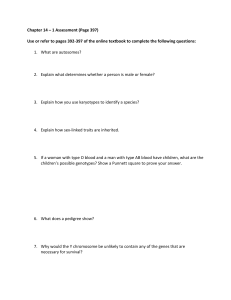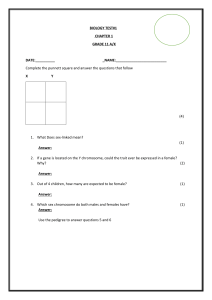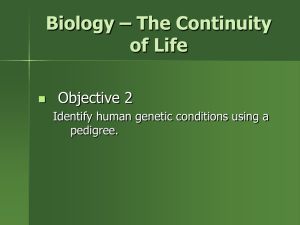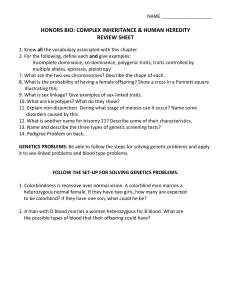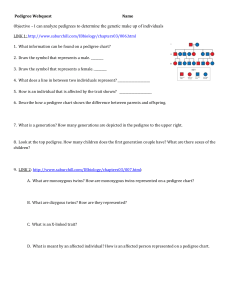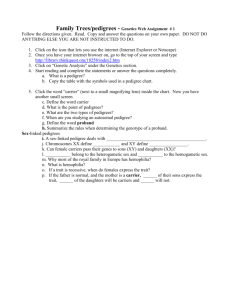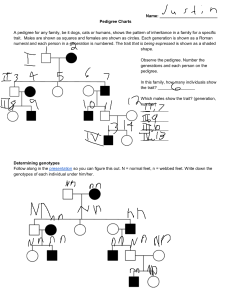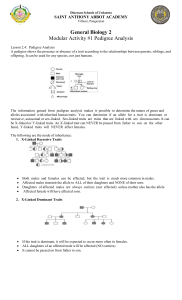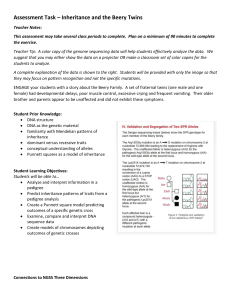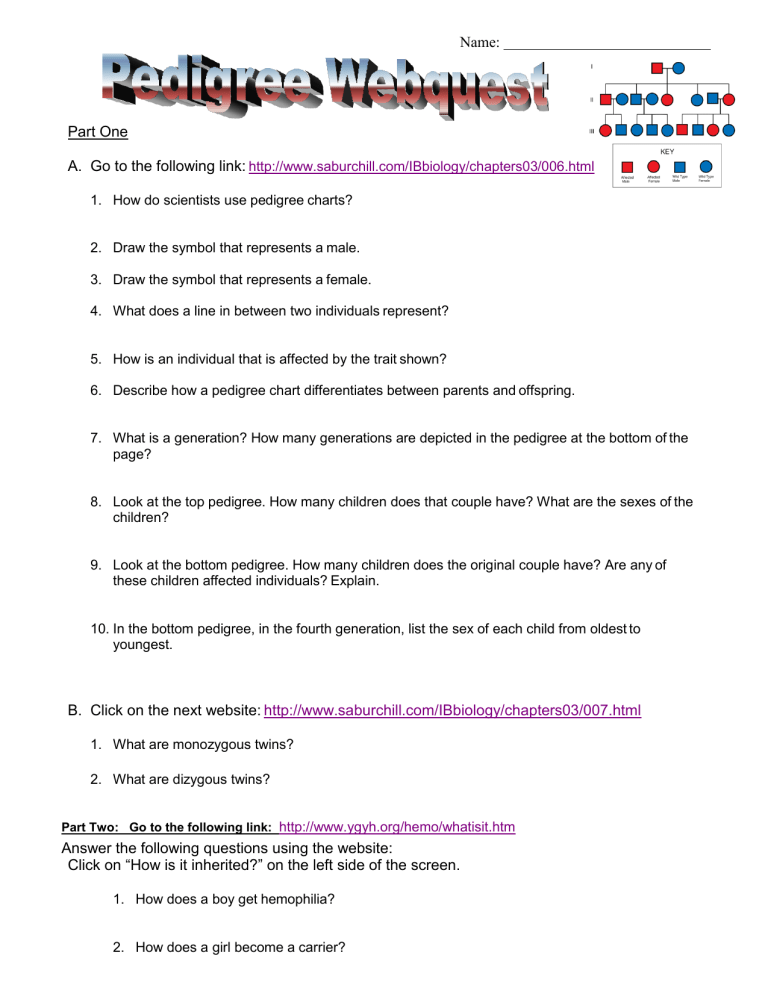
Name: Part One A. Go to the following link: http://www.saburchill.com/IBbiology/chapters03/006.html 1. How do scientists use pedigree charts? 2. Draw the symbol that represents a male. 3. Draw the symbol that represents a female. 4. What does a line in between two individuals represent? 5. How is an individual that is affected by the trait shown? 6. Describe how a pedigree chart differentiates between parents and offspring. 7. What is a generation? How many generations are depicted in the pedigree at the bottom of the page? 8. Look at the top pedigree. How many children does that couple have? What are the sexes of the children? 9. Look at the bottom pedigree. How many children does the original couple have? Are any of these children affected individuals? Explain. 10. In the bottom pedigree, in the fourth generation, list the sex of each child from oldest to youngest. B. Click on the next website: http://www.saburchill.com/IBbiology/chapters03/007.html 1. What are monozygous twins? 2. What are dizygous twins? Part Two: Go to the following link: http://www.ygyh.org/hemo/whatisit.htm Answer the following questions using the website: Click on “How is it inherited?” on the left side of the screen. 1. How does a boy get hemophilia? 2. How does a girl become a carrier? 3. If a woman is a carrier and the male does not have hemophilia, draw a Punnett Square and indicate the possible outcome (phenotype and percentages). Use the letter H and h. P1 = Xh Y (father) crosses with XH Xh (mother) Genotype ratio: Phenotype ratio: Part Three Read further about sex-linked genetic disorders: http://anthro.palomar.edu/biobasis/bio_4.htm 1. What sex chromosomes are found in males? Females? 2. Explain why females might carry a recessive X-linked trait, but not express it, where as men always express X-linked recessive traits. 3. How many human X linked traits are known? 4. Give 3 examples of non-female anatomical traits that are located on the X chromosome. 5. Draw and briefly explain using Punnett squares the following genetic crosses: (Hint: Look at the examples on this link.) a) A woman with normal vision but who carries the colorblind gene marries a man with normal vision. b) A colorblind man marries a woman homozygous for normal vision. 6. What sex-linked trait ran through the royal families of Europe? 7. How many genes are located on the Y chromosome? 8. How many genes located on the Y chromosome are involved in sperm production vs. cellular activities? 9. How many couples in America are infertile?
